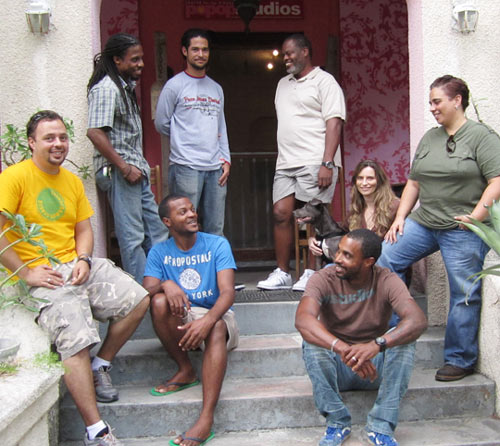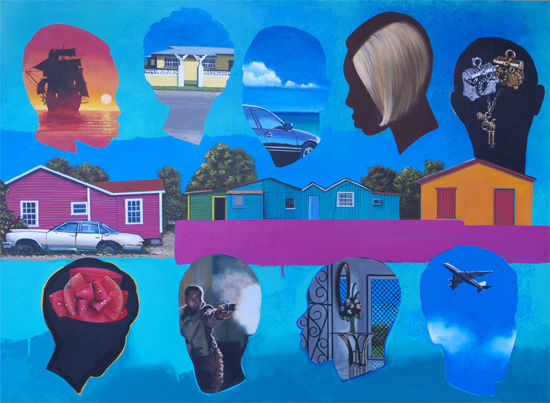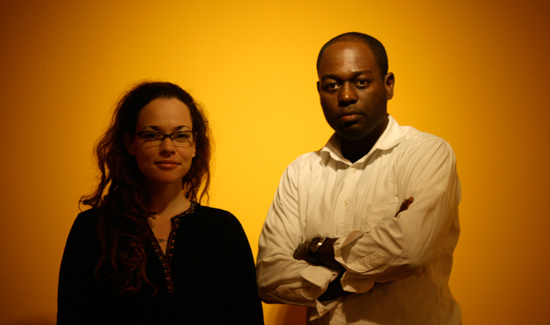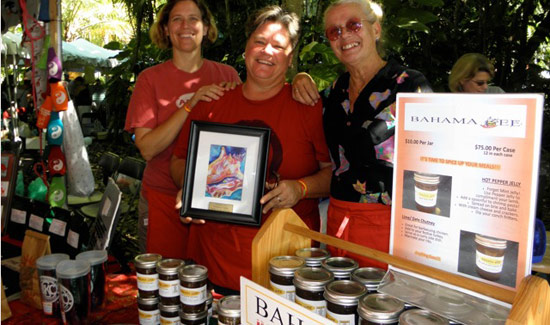
When listing fine art media, photography is often not considered or found towards the end. The overwhelming presence of commercial photography in The Bahamas as well as the rapid move into the digital age where everyone can own a camera on their phone with a variety of lens and filter settings with the push of a button contribute to the idea that photography can hardly be considered a serious form of expression.
Yet the upcoming exhibition at Popopstudios International Center for the Visual Arts, “Deception”, aims to address and redefine those boundaries. Opening the night of December 8, the seventeen contributing artists who will exhibit one to three pieces each will, by method or subject matter, make the case that photography is a complex and innovative modern art form.
This year’s exhibition follows their successful fine art photographic exhibition last year. However this time the work centers around a theme of “Deception” —chosen by husband and wife team Duke and Lisa Wells, who spearheaded this exhibition—that will set the emotional tone for the show.
“It worked as a theme as evidenced by the wide variety of images that we received with some interpreting the theme quite literally and some interpreting the theme quite esoterically,” says Duke Wells. “But overall, the camera is a tool to take something further.”
Indeed, the fact that many of the contributing artists are primarily known for their work in other media such as paint, sculpture, and drawing stands as a testament to the wide range of work viewers can expect to see. In fact, many of them admit that they use photography at some point in their artistic practice, whether the final piece uses an actual photograph or not.
“A lot of my work began as a photograph or because of a photograph I’ve taken,” says contributor Holly Parotti. “I always have a camera on me, whether my phone or a digital camera. I take pictures of what intrigues me and the process begins there.”
“Artists have hundreds of thousands of photographs that fuel their work. On the question of what it takes to make something a fine art medium, I think having an exhibition like this is a catalyst to start becoming involved in this medium we all use.”
For contributing artist Kishan Munroe, the exhibition was a chance to capture the emotional and thematic implications of “deception” through a somewhat photojournalistic piece, allowing it to fit into his overall artistic practice of capturing and exploring human connection.
“The topic I chose to focus on is a deceptive topic—a sociopolitical global situation that I was able to see and link to The Bahamas,” he explains. “It speaks about deception on a local and global scale.”
For another contributing artist, Steffon Grant, the deception lay in the process which would provide the emotional tone of the final work.
“I kind of went a different route when I interpreted the theme—I deceived my models,” he explained. “When it came to the site, I changed the venue and told them they were going to do something else. Most of them complied, mostly due to peer pressure.”
Other pieces—by the rest of the contributing artists Jason Bennett, Dede Brown, Kendal Hanna, Sabrina Lightbourn, Phoebe Luk, Jeff Major, Holly Parotti, Alistair Stevenson, John Cox, Lisa Wells, Lyndah Wells, Ash Henderson, Jackson Petit, Heino Schmid, and Duke Wells—explore the gamut of social, philosophical and political themes, self-identity, as well as using the very craft of photography to address its nature and status in society.
“I think photography is deceptive by nature so I think that’s attractive, that you can have the metaphor and also the physical nature of the machine that is quite deceptive. You can get away with a lot,” points out contributing artist Heino Schmid.
Indeed, the very theme of “Deception” taps into the darker cultural implications of photography—the voyeuristic invasion of space by the photojournalist or eager tourist, the belief by certain cultures that “taking” a picture “takes” some of one’s soul, the very language of “shooting” a picture—and such exploration of that connection may prove to be a fascinating journey.
Furthermore the hope is for the exhibition to create a space where viewers rethink their ideas about what to look for in “fine” art—gone is the absolute physicality present in a finished piece (in deliberate brushstrokes, particular shaping of wood, active lines of charcoal) and in its place questions arise about composition, narrative and reality.
“I think the process is so immediate to so many people, and that’s the problem. The dumbed down response to it is that it’s just too easy—you can take the camera and point at something and push the button,” points out contributor to the exhibition and founder of Popopstudios, John Cox.
“I think the problem with it is the average person doesn’t come to photography with the right context; they look at it and critique the surface of the photograph because that’s what impresses people with painting.”
Duke Wells, who says he believes photography is as much a fine art as any other media, points out that the emotional impact and experience of photographic work lies in the very presence of the artist’s intent and the framing of the narrative.
“When you take a picture of a bride and groom and the mother-in-law blows that up to 20 x 24 and hangs it on her living room wall, is that art? Or if you take a beautiful picture of poinciana trees with a sailboat and water in the background, is that art?” he asks.
“There has to be some understanding of what art is and that helps separate fine art photography from real photography, and I think that means whether some part of the artist is in the photograph or not, expressing something or communicating something visually, not just detailing or documenting the facts.”
Indeed, the photographer may be more of a storyteller than a historian—or perhaps the dichotomous attraction and aversion to photography and the photographer lie in its ability to merge with so many art forms and different narrative arcs. At “Deception”, viewers can expect to engage on all of those levels and have radically different conversations about the function of photography in the cultural landscape.
“The exciting thing is that we’re all visual practitioners but the thing is a photograph is not so different from other art mediums; and if you adjust your way of thinking about it, it deconstructs that high art/low art thing where photography gets compartmentalized,” points out John Cox.
“That’s the exciting thing about what Popop tries to do—not just with this show but all of them—to blur boundaries and to reestablish definitions.”
“Deception” opens December 8 from 6 p.m. – 9 p.m. in the art gallery at Popopstudios International Center for Visual Arts in Chippingham and continues until January 7, 2012. Gallery hours are 11 a.m. – 5 p.m., Wednesday through Saturday.
A special talk with the contributing artists to the exhibition about the process behind their work will take place December 14 at 4 p.m. in the gallery space.
Sonia Farmer
The Nassau Guardian
Arts and Culture



